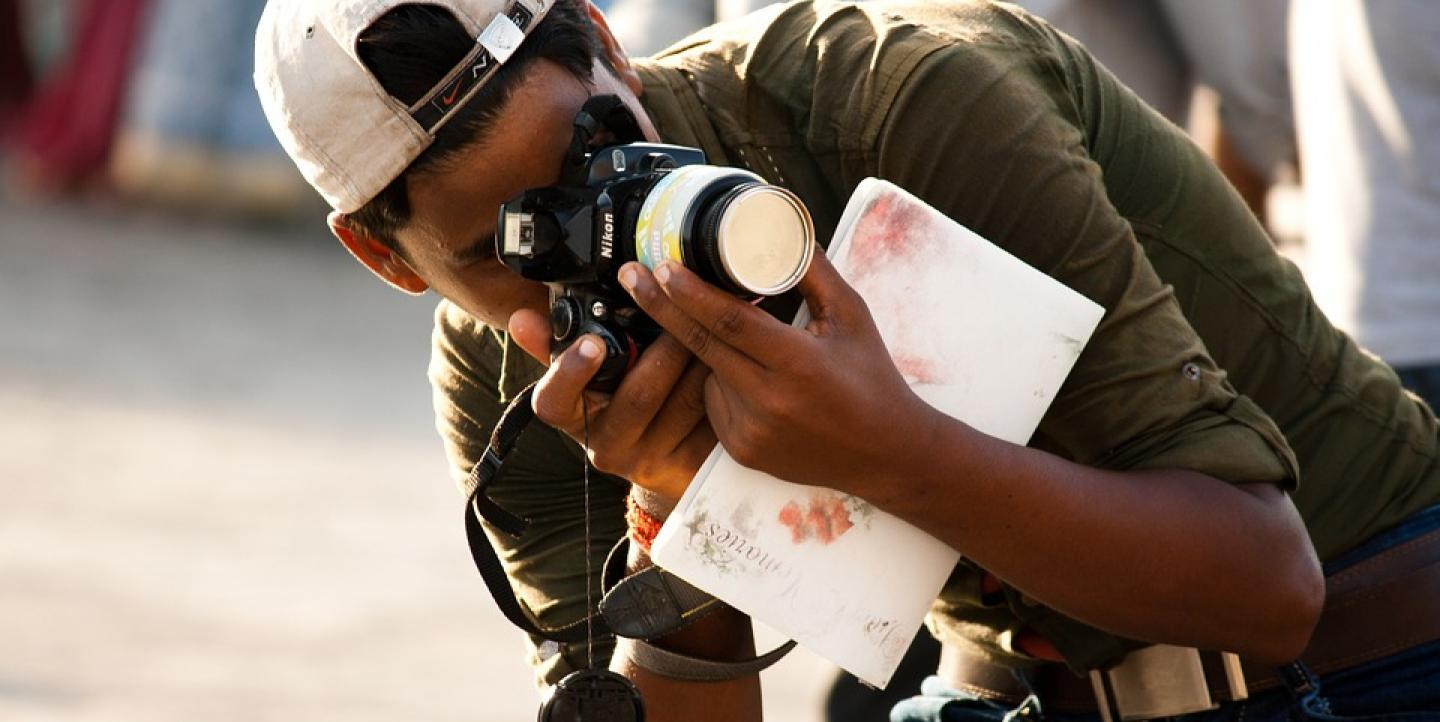This is the third installment in our six-part series, Perspectives in Photojournalism. Click to read part one or part two.
Alex Potter has taken what she calls an “unorthodox path” in her career. The international photojournalist, whose work has been featured in publications such as The New York Times, The Atlantic and The Washington Post, actually studied nursing.
“When I graduated from high school, it was when the economy crashed and the [journalism] industry started to really change,” she said.
Even though she was interested in both nursing and photography, she followed her family’s practical advice to “get a degree in something else.”
Several years later, she doesn’t regret her choice for several reasons. First, because she believes her nursing studies still inform her practice as a journalist and second, because she is one of many freelance photojournalists trying to make great work in a financially challenging industry.
“Nursing came in handy because I could be abroad working on a story that I cared about and then go back to the States and do a temporary nursing contract, which was financially viable,” she said.
As she was starting out, Potter remembers of a lot of requests for her to give away her work for free. But her side job as a nurse helped her take away the stress of being able to survive financially.
“I think I entered the industry when it had already become difficult, I was never part of it when it was easy,” she said.
Allison Shelley, another international freelance photojournalist, has been applying to grants to be able to fund her “unsexy international in-depth reportage stories,” and she said they have helped her significantly.
She encourages people to reach out to foundations and grant-giving organizations to ask for advice and discuss their ideas.
“I try to do that as much as possible and try to have a dialogue with them. You can talk on the phone or Skype and talk about these ideas and whether they fit with the grant idea,” the former staff photojournalist said. “There is money out there now, more than before.”
Tom Hundley, senior editor at the Pulitzer Center on Crisis Reporting, a grant foundation, believes the financial struggle can be seen across the media landscape.
“Everybody is in the same boat,” he said. “It’s difficult unless you have a big name in the business. It’s too easy for publications to tell (freelancers) ‘Yes, go to Syria and show us what you have when you get back,’ and send them off on assignments — not necessarily even risky ones, but not to give them any sort of firm commitments.”
He added that even when publications accept a story, they tend to not pay freelancers sufficiently.
“It’s a tough business for photojournalists,” he said.
Shelley said she thinks the model has shifted so far, and that international reporting has been particularly impacted.
“So many of the news or international features that I do are supported or subsidized by grants,” she said.
For her, many international photo stories would not exist without the support of grant foundations because publications are increasingly not covering field expenses and the page, gallery and photo rates have gone down.
“All of these international associations are supporting those important stories that need to be out there.”
Potter, like Shelley, also gets money for her stories from grants. She once crowdfunded her trip back to Yemen on Kickstarter, as well.
She said many photojournalists have side gigs and second jobs to make ends meet, but many don’t talk about it. According to the World Press Photo’s State of News Photography report in 2016, fewer respondents of the survey were working full time in 2016 than 2015 going from 74 percent in 2015 to 61 percent in 2016. Less than half of the respondents of the survey received all their income from photography.
“It’s pretty taboo because no one wants to admit that they’re not able to make what it takes to have a normal life — whatever US$50,000 a year — on photography alone,” she said.
Working in conflict areas makes it even more complicated. She’s been working in Iraq as both a photojournalist and a nurse in an NGO. During the battle of Mosul, she said fixers could charge between US$400 and $700 per day for translation and access to the front. While she considers it a normal and fair price, it meant as a freelancer, she didn’t have enough money to go cover the event without a proper assignment and a publication accepting to cover the cost.
It was impossible to go out by herself and expect to make money.
“You’d go out and shoot for the day, and pay US$500 (to the fixer), maybe sell those photos, you can get maximum for a gallery, you can get $500 so then you break even,” she said. “I could never afford it, not as a freelancer without an assignment.”
At Roads & Kingdoms, photo editor Pauline Eiferman sees the daily financial situation of her industry. She said she often has to rely on writers taking their own photos, which she finds frustrating.
“Ideally, I would love to have every single photograph on the site being taken by a professional photographer, but I think most publications are in the same situation where we have to do what we can,” she said.
Main image CC-licensed by Pixabay via PDPics.

